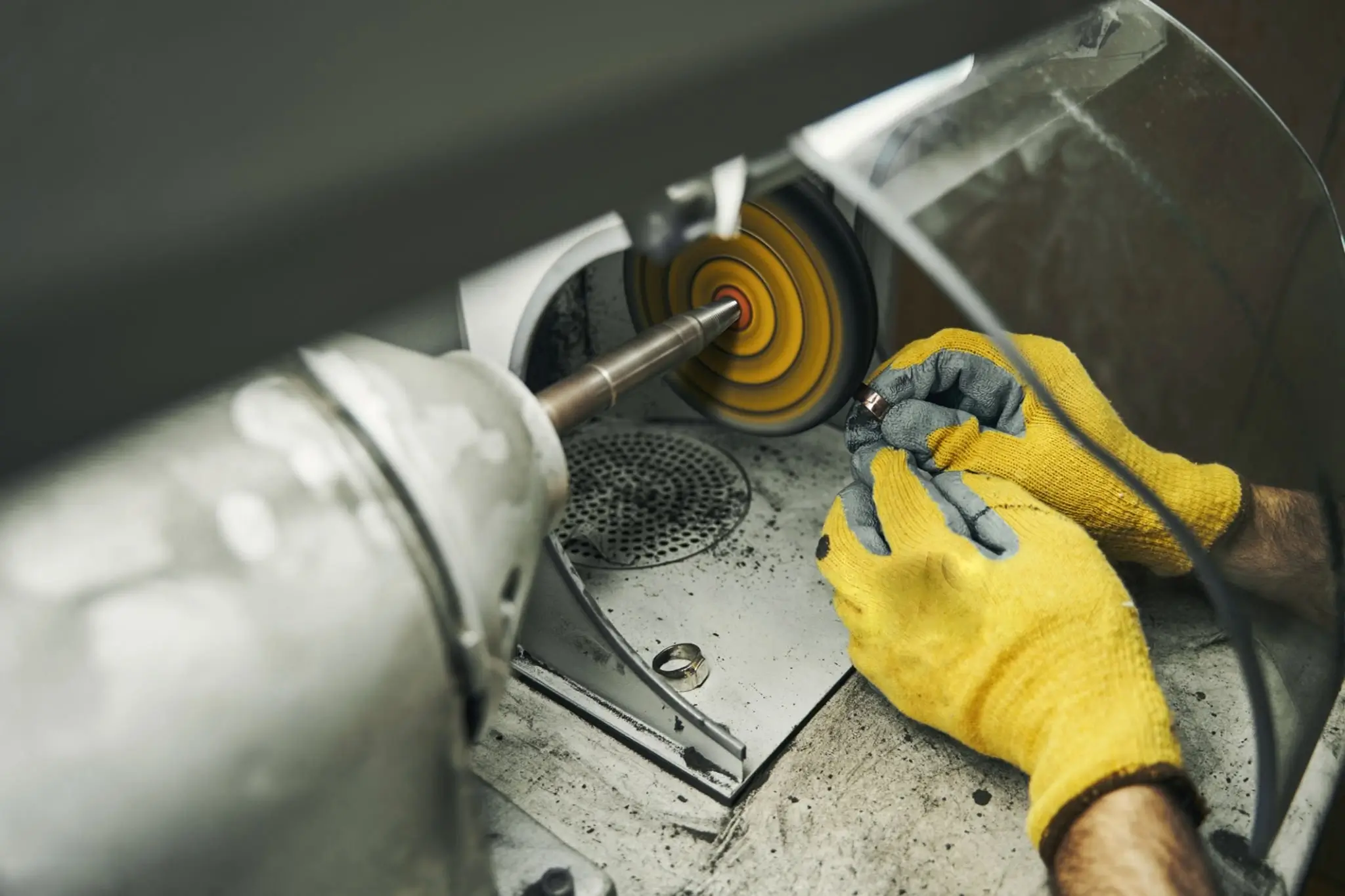That moment you hold up a finished piece and see a perfect shine—that’s the goal. But a cheap or wrong polishing machine doesn’t just waste your time; it can ruin good work.
I’ve watched jewelers struggle with machines that round off sharp details or burn out mid-order. With so many options, it’s tough to know what’s worth your investment.
This guide cuts through the confusion. Think of it as a straightforward talk from a fellow jeweler. We’ll look at which machine fits different kinds of work, so you invest in a tool that pays you back with consistent results.
The Four Main Polisher Types
Picking a polisher isn’t about finding the “best”—it’s about finding your one. Your choice depends on materials, volume, and design complexity.
1. Magnetic Tumblers
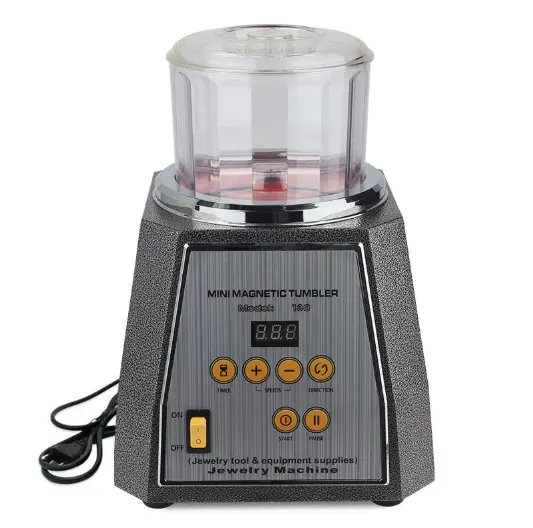
- How it Works: A magnetic field spins tiny stainless steel pins in fluid, reaching every nook and cranny.
- Best For: Uniform satin or high-shine finishes on intricate chains, filigree, and pieces with blind holes.
- Limitations: A finisher, not a grinder. Won’t remove deep file marks or heavy casting skin.
2. Rotary Tumblers
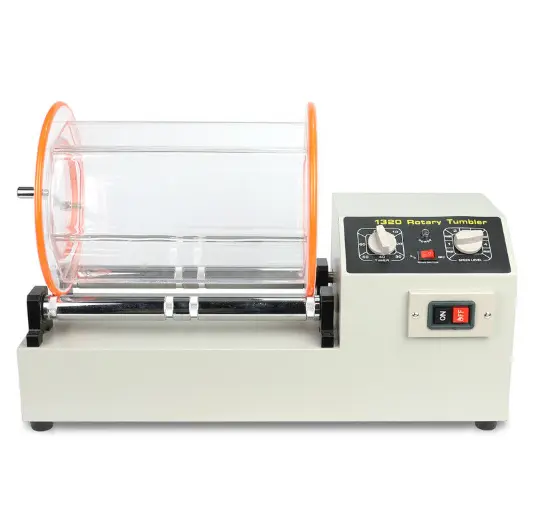
- How it Works: Jewelry and media tumble together slowly in a rotating barrel through friction.
- Best For: Efficiently deburring, removing investment scale, and smoothing large batches of simple pieces like wedding bands.
- Watch Out: Can round off crisp edges and fine details if overused.
3. Bench Lathes / Buffing Motors
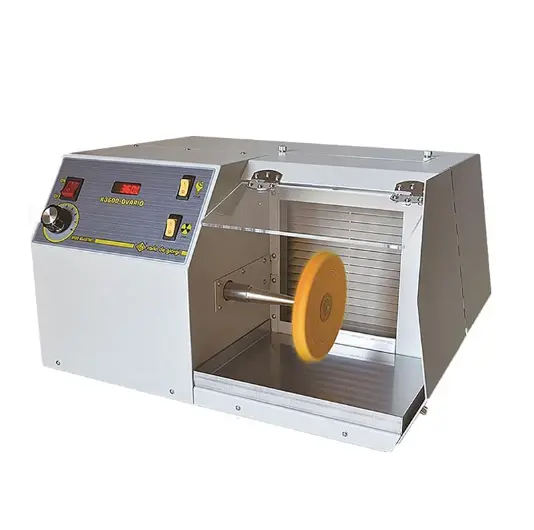
- How it Works: A motor on your bench drives spindles with buffs and compounds—100% hands-on.
- Best For: Achieving a deep mirror finish on large or irregular items and quick touch-ups.
- Skills & Safety: Requires skill to avoid damaging pieces. A dust collection system is essential for safety.
4. Vibratory Tumblers
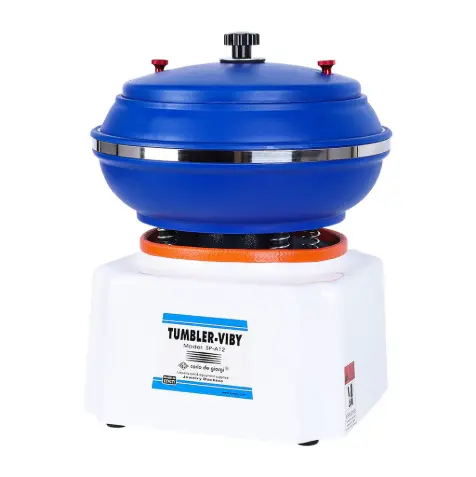
- How it Works: The machine vibrates, causing media and parts to rub gently in a bowl.
- Best For: High-volume batches needing a delicate touch, ideal for even satin finishes.
- Trade-Offs: Noisy and takes up space. Can’t achieve a true mirror gloss.
The Specs That Actually Matter
Forget flashy ads. Focus on these technical details:
- Motor Power: For bench motors, Horsepower (HP) matters. Variable speed control is essential for different metals.
- Real-World Capacity: For tumblers, consider your typical batch size. Overloading or underloading reduces efficiency.
- Noise & Footprint: Match the machine to your workspace. Vibratory tumblers are loud; magnetic tumblers are compact and quiet.
- Consumables Are Key: The right media and compounds are crucial. Using the wrong type can scratch work or damage machines.
Matching the Machine to Your Reality
| If This Sounds Like You… | Then Start Here… | The Main Thing to Remember… |
| Hobbyist / Home Studio | Small Rotary Tumbler or a Compact Bench Motor | Balance initial cost with noise levels and space. |
| High-End Custom Maker | Magnetic Tumbler + a good Bench Lathe | You need both for flawless details and a final mirror shine. |
| Small Production Shop | High-Capacity Rotary or Vibratory Tumbler | You need durability and speed for processing large batches. |
| Focus on Repair & Fixes | A versatile Bench Lathe with a dust collector | You need speed and manual control for localized work. |
Smart Spending: Budget, Final Reality Check
Know where you fit to make a smart investment:
1. Investment Tiers
- Entry-Level (Hobbyist): Low-cost, suitable for occasional use. Not built for all-day commercial work.
- Mid-Range (Serious Studio): Balances performance and value for daily small business use.
- Professional/Industrial Grade (Power User): Heavy-duty, for high-throughput production and constant use.
2. Pre-Purchase Checklist
Run through this quick list before you commit:
- Safety: Does a bench motor include or recommend a specific dust collector? Never, ever compromise on this.
- Material Match: Is the machine built for your metals? For tumblers, is the tub lining resistant to your chemicals?
- Support: What does the warranty actually cover? How easy is it to get a replacement barrel or a new spindle a year from now?
- Test Run: Can you see a video demo or, even better, send a sample of your work to be tested? A reputable dealer should offer this.
Wrapping Up
Choosing the right Jewelry Polishing Machine isn’t just a purchase—it’s a strategic decision for your business. The right tool doesn’t just save you time and frustration; it elevates the perceived value of everything you create.
It’s about finding the perfect partner for your specific craft, volume, and budget. When you get it right, that final, brilliant shine becomes the most rewarding part of the process.
Visit the JYBS official website today to find the perfect polishing solution that will make your work shine.

